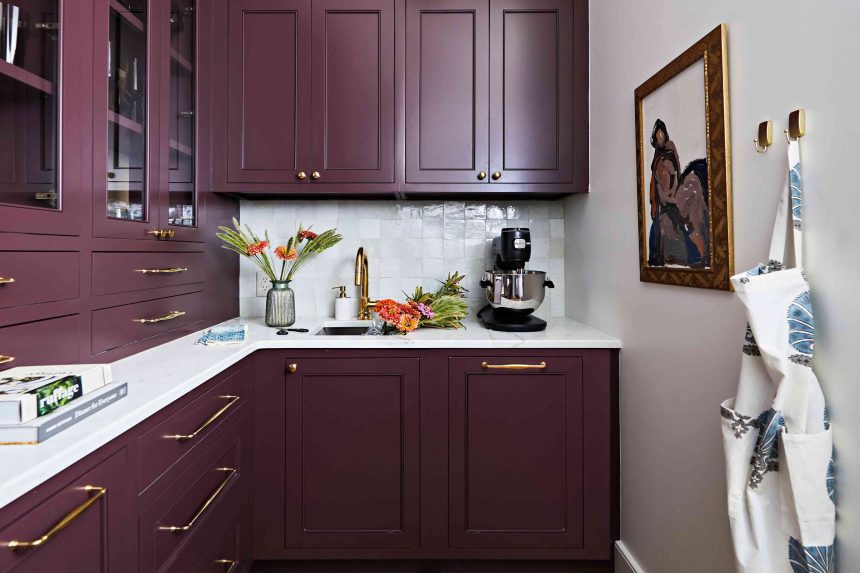Most people’s first association with the word “scullery” is to follow it with “maid,” which makes perfect sense! We’ll circle back to this in a moment.
A scullery is traditionally what we call the extension of a kitchen, normally found in historic (think: Victorian-era) homes built with service in mind. They normally contain a sink and cabinet storage—more modern ones even have a dishwasher installed. Here in Asheville, Biltmore House is one of the largest attractions, and if you’ve ever seen Downton Abbey, you know a little something about the upstairs/downstairs vibe of those kinds of homes.
Sculleries were built so that the hosts and guests at a party could continue enjoying themselves out of sight of the dirty kitchen (the scullery maid, by the way, was the person whose job it was to stay put in the kitchen and take care of the dishes). This way, the messy part of cleaning up could be sequestered to another room. These days, while none of us is quite in the circumstance of Lord Grantham or Cornelius Vanderbilt, we can appreciate the more practical, everyday functions a scullery can provide.
Before we get into the myriad ways you can make your existing scullery work for you (or inspire you to build one!), let’s talk about what exactly makes a scullery distinctive from a butler’s pantry.
Scullery Vs. Butler’s Pantry
Butler’s pantries are increasingly popular in new builds. With the rise of publications like Architectural Digest, along with eye-candy home decor accounts on Instagram and Pinterest, people are constantly exposed to perfectly styled photos of other people’s kitchens, free of the cooking mess, stray bills, and piles of homework that exist in most of our regular, un-staged kitchens. This kind of minimalism has given way to a new generation of butler’s pantries, concealing the visual busy-ness of toaster and blender cords, coffee stations, and other less aesthetic elements of the most high-traffic room in the house.
As far as telling them apart, the big difference between a scullery and a butler’s pantry is that a butler’s pantry is not plumbed, where a scullery is.
Laurey W. Glenn; Styling: Buffy Hargett Miller
3 Ways To Use A Scullery
Not just used for dishwashing, the possibilities are endless for this second kitchen.
- A wet bar. Make your scullery into the members-only bar of your choice. Go moody with darker paint, or keep it light and modern with glass and lots of warm lighting. Either way, it’s the perfect place to duck into while pouring everyone’s drinks, only to return with a tray that’ll delight your party.
- A prep kitchen. Even if you won’t be washing dishes, having an off-kitchen room where you can create your mise en place will take all the food mess out of your main kitchen. Outfit this room with tools and knives necessary for prepping and a concealed, in-cabinet garbage can to dispose of any food waste or packaging. Don’t have time to tidy up? Here’s the best part: simply close the door behind you and get to hosting! A scullery allows cleaning up to be a problem for Future You.
- The appliance library. Imagine what your countertops would like like totally free of cords, appliances, and clutter. If you’re someone who loves a clean kitchen workspace, there are usually two options: one, you have no appliances; or two, you lug out and then tuck away everything you ever use, which can be annoying and cumbersome. A scullery is the ideal hiding spot for anything that isn’t quite attractive enough to keep out all the time, but is very high-use.
However you choose to use your scullery, make it work for your specific needs. Most folks would kill for this special room in your house, so take advantage of the architectural treat that is a scullery, or re-do it entirely and figure out how to maximize efficiency for your family’s needs. The sky’s the limit!





